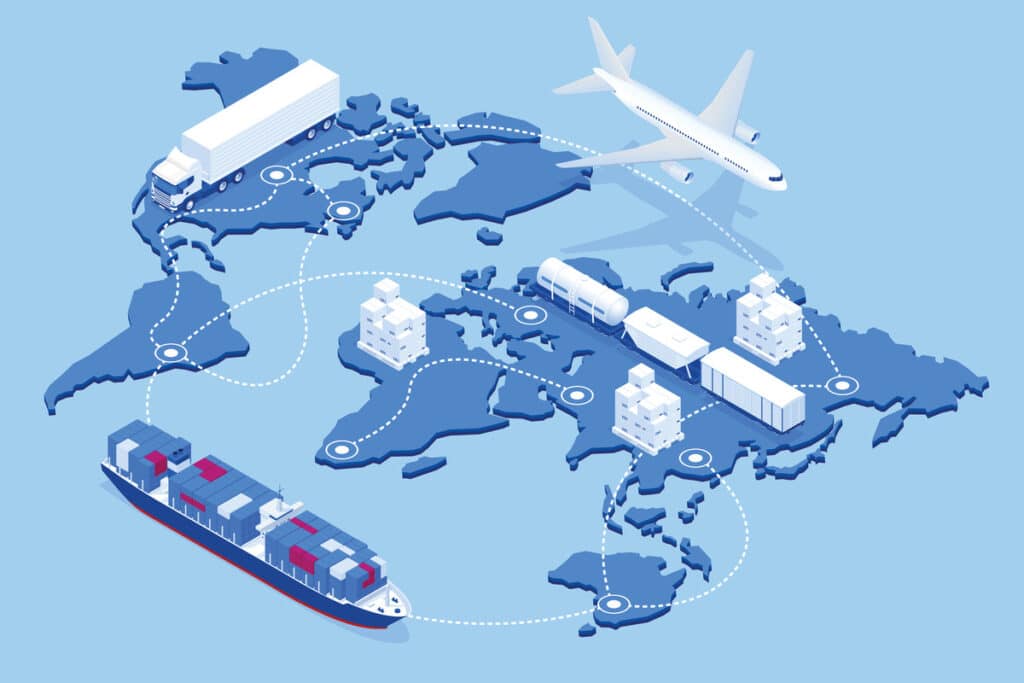Regulatory compliance can feel like a maze– filled with rules, safety standards, and certifications that shift depending on where and what you’re manufacturing. But skipping this step isn’t just risky. It can derail your entire product launch or create serious problems for your business after your product enters the market.
Product compliance helps protect your customers, your business, and your reputation. It ensures your product meets all the relevant regulations — from design and materials to labeling and shipping — and helps you avoid the costly consequences of non-compliance, like customs delays, fines, or recalls.
In this article, we’ll break down why regulatory compliance matters in product manufacturing. You’ll learn how to factor in compliance requirements from the start, how product compliance testing works, and what’s at stake if you don’t. Whether you’re developing a pet accessory, kitchen tool, or piece of consumer tech, this guide will help you make safer, smarter decisions.
Key Takeaways
- Start compliance planning at the beginning of product development to avoid costly rework and prevent delays later in the process.
- Non-compliance impacts more than your bottom line, leading to recalls, fines, shipping delays, and long-term damage to brand trust.
- Different markets require different strategies, and understanding regional standards is essential for smooth global distribution.
- The right partners simplify the compliance process by helping businesses manage testing, documentation, and certification across every phase of development.
The Role of Compliance in Product Development
Understanding regulatory compliance is the first step in making informed product manufacturing decisions. It’s about more than just following rules — it’s about aligning with standards that protect public health, support market access, and reduce business risk.
Regulatory Compliance Extends Beyond the Product Itself
Regulatory compliance refers to the full scope of rules and standards set by regulatory bodies, which includes everything from safety and labeling laws to environmental and import and export regulations.
These apply not only to the finished product, but also to how it’s documented, packaged, and brought to market. Depending on your industry, this could mean meeting federal regulations in the U.S. or adapting to region-specific requirements like those from the European Union.
Ignoring these regulatory requirements can lead to non-compliant products, which often result in financial penalties, customs delays, or even forced product removal from retail channels.
Product Compliance Is a Core Part of Manufacturing
While regulatory compliance is broad, product compliance zeroes in on your actual manufactured product. This includes safety standards, material sourcing, test reports, and performance certifications.
Achieving product regulatory compliance ensures your product can be legally sold in your target market. In most industries, product compliance regulations vary based on use case, geography, and product category, which is why it’s critical to define these requirements early in the process.
Why Compliance Matters at Every Stage of Development
From concept to post-production, compliance requirements influence everything: which materials you choose, what testing is required, how your packaging is labeled, and what documentation you’ll need for customs and audits. Missing one detail can stall production or block distribution.

By considering regulatory standards from the beginning, businesses can save time, avoid non-compliance risks, and keep their product roadmap on track.
Key Regulations to Keep in Mind
When developing a new product, staying aligned with regulatory compliance requirements is critical. Different industries face different rules, but a handful of core regulations come up again and again, especially when it comes to product compliance. Below are five of the most important regulations that product teams should understand from the start.
- Consumer Product Safety Improvement Act (CPSIA): The CPSIA establishes strict safety standards for children’s products sold in the U.S., including limits on lead and other hazardous substances. It requires third-party safety testing and a Children’s Product Certificate to confirm compliance before items can enter the market.
- Food & Drug Administration (FDA) Regulations: The FDA regulates a wide range of consumer products and ingredients, including food, supplements, cosmetics, and medical devices. These standards ensure that what people eat, apply to their bodies, or use for health-related purposes is safe, properly labeled, and free from harmful contaminants.
- ASTM Standards (American Society for Testing and Materials): ASTM publishes voluntary testing standards for product performance, durability, and safety. While not always legally required, these standards are widely adopted across industries and often serve as benchmarks for demonstrating compliance with retailer or government expectations.
- CE Marking (European Union): CE Marking is required for many products sold in the European Union and shows that a product meets EU safety, health, and environmental protection standards. It’s a key step for entering the EU market and avoiding customs delays or legal issues.
- REACH Regulation (Registration, Evaluation, Authorisation and Restriction of Chemicals): REACH is an EU regulation that limits the use of hazardous chemicals in consumer products. Manufacturers must evaluate chemical risks and may need to register substances used in their products to protect human health and the environment.
The Cost of Non-Compliance
Failing to meet product compliance regulations is more than a technical misstep. It creates real setbacks that can delay launches, hurt brand credibility, and drain resources. For small and mid-sized businesses (SMBs), these consequences often land harder due to limited budgets and smaller teams compared to their larger competitors.
Recalls, Fines, and Operational Delays
Non-compliant products can lead to product recalls, customs rejections, and blocked shipments. These issues often disrupt the supply chain and delay access to key markets. Regulatory bodies may issue financial penalties for violating safety standards or for missing required documents, with fines sometimes being very costly, depending on the product type and region.

Reputational Damage and Lost Shelf Space
If a product fails compliance checks, retailers may pull it from shelves and choose not to restock it. Being flagged by market surveillance authorities can also weaken consumer trust, which may take years to rebuild.
For example, Starbucks had to recall 2.5 million metal straws after reports of mouth injuries, drawing negative media attention and damaging customer confidence. Even strong brands can face lasting setbacks after a recall, making it harder to regain shelf space and market momentum.
Making Compliance a Seamless Part of Product Development
Compliance should not be treated as a final checkpoint. It needs to be considered from the beginning of your product development process. By building compliance requirements into your early-stage decisions, you can reduce the risk of costly delays, rework, or missed safety expectations down the line.
Start With Compliance Goals at the Concept Stage
Establish clear compliance objectives before finalizing your product design. This includes identifying which safety standards apply to your product category and where it will be sold. When compliance is built into early design choices, teams can avoid expensive changes later and streamline production timelines.
Match Product Types With the Right Testing Requirements
Different products have different compliance pathways. For example, children’s products must undergo third-party lab testing under CPSIA, while food-contact items must follow FDA regulations. Understanding the specific rules for your product type helps ensure the right tests and certifications are in place from the beginning.
Design With Regulations in Mind
Material selection, labeling, packaging, and even user instructions can all affect whether your product meets product compliance regulations. Planning for these early helps reduce friction when moving into prototyping or sourcing.
What Product Compliance Testing Involves
Testing is one of the most critical parts of ensuring your product meets required safety standards and passes regulatory review. The right product compliance testing helps ensure compliance, avoid delays, and prove that your product is safe for use in your target market.
What Tests Are Typically Required
Depending on the product category and region, common tests may include chemical analysis, flammability testing, mechanical strength, durability checks, and labeling audits. These tests confirm that a product meets its essential requirements and provides documented evidence that it complies with all relevant regulations.

When to Test During the Development Process
Testing should happen in stages — before production, during sampling, and after manufacturing is complete. Starting early allows for time to correct any issues without holding up your launch. It’s also important to repeat tests if regulations change or if you alter materials, suppliers, or product design.
Who Performs the Testing
Most testing is handled by certified third-party labs that follow strict accreditation standards. For example, children’s products must be tested by labs approved by the Consumer Product Safety Commission (CPSC). These labs provide formal test reports that are often required for customs clearance and retail approval.
Compliance Doesn’t End After Manufacturing
Getting a product manufactured is only part of the equation. Even after production wraps, there are still key compliance requirements to meet before your product can reach the market. These include proper packaging, labeling, accurate documentation, and meeting regional shipping and import standards.
Packaging, Labeling, and Documentation Matter
Every region has its own rules about what must appear on your product and how it should be labeled. This includes safety warnings, barcodes, origin details, and instructions. The Fair Packaging and Labeling Act (FPLA), for example, requires consumer goods in the U.S. to clearly state what the product is, who makes it, and how much is inside. Accurate, up-to-date documentation is also essential for clearing customs and demonstrating that your product meets all regulatory requirements.
Import Requirements Vary by Market
Countries like the U.S., members of the European Union, and Australia each have different import regulations. Even if your product is fully compliant in one country, you may need different certifications, formats, or languages to meet the rules in another. Missing paperwork can delay shipments or block market access entirely.
Why Ongoing Compliance Support Helps
Keeping up with evolving regulations and standards can be challenging, especially when expanding into new markets. Many teams benefit from working with logistics or compliance experts, like Gembah, who can help them stay aligned with changing rules, maintain proper documentation, and avoid last-minute disruptions.
Crafting a Compliance Strategy
Compliance works best when it’s built into the way your team develops products, not just something you scramble to solve at the end. A well-structured strategy helps your business stay aligned with regulatory compliance requirements, reduce risk, and bring products to market faster.
Plan Ahead, Don’t Play Catch-Up
Compliance planning should begin early in the product lifecycle. That means budgeting for safety testing, identifying which regulations and standards apply to your product, and tracking what documentation will be needed at each step. Assigning a clear internal owner for compliance helps keep timelines moving and responsibilities clear.
Regular audits and documentation reviews ensure your process stays up to date, especially when expanding into new markets or updating a product’s design.

Use Compliance to Build Trust
Meeting recognized standards like CPSIA, FDA regulations, or CE Marking is not just a legal requirement — it’s a competitive advantage. Certifications show retailers and consumers that your brand prioritizes product safety and transparency. This can help you stand out in crowded categories and build long-term brand equity.
How Gembah Helps Teams Stay Compliant
Gembah helps businesses manage regulatory compliance across every stage of product development — from early design decisions to sourcing, testing, and logistics. By integrating compliance into the full development journey, teams can reduce risk, avoid costly delays, and confidently meet regulatory standards across markets.
Through its network of global experts and certified testing partners, Gembah makes it easier to access the resources needed for product compliance, safety certifications, and market entry. This end-to-end support helps brands avoid recalls, protect their reputation, and launch faster with confidence.
Frequently Asked Questions
What is product compliance, and why does it matter?
Product compliance is all about making sure your product adheres to legal, safety, and labeling standards, which is crucial for avoiding fines and recalls while protecting your sales. It really matters because staying compliant builds trust with consumers and ensures your business runs smoothly.
When should businesses start thinking about compliance in product development?
You should start thinking about compliance right from the earliest design phase to prevent expensive changes down the line. It makes the whole development process smoother and more efficient!
What types of product testing are required?
To ensure quality, products typically require chemical, durability, and safety testing both before and during production. It’s essential to meet these standards for consumer safety and satisfaction.
Do compliance rules change based on where businesses sell?
Compliance rules vary by country, affecting packaging, labeling, and import documentation for the same products. This means businesses need to stay informed about the specific regulations in each market they enter.
What kind of support should businesses look for when managing compliance?
To manage compliance effectively, businesses should seek partners that provide integrated support across design, sourcing, testing, and logistics. This approach ensures compliance is maintained at every stage of development.


